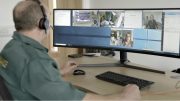The delivery of healthcare has undergone wholesale change, in response to the challenges posed by COVID-19. Not long ago, the notion of clinicians working from home and consulting in ways that limit physical contact with their patients, would be viewed by some as unrealistic.
However, the pandemic has made it a necessity for clinicians and patients to interact virtually, in an effort to protect public health. As such, being able to access medical data remotely has become a top priority for healthcare organisations.
Even for those where digital transformation programmes were well underway, this has been challenging process, but still much easier and faster than for those who had held back from migrating wholesale to cloud-based solutions, due to concerns around data security and patient privacy.
But, with on-premise data centres already struggling to handle the cumulative impact of a growing volume of EPR data, medical images and information from smart devices, this was an issue that sooner or later had to be addressed. So, for many, COVID-19 has merely accelerated the process by shining a light on manual workflows and paper-based processes.
And while there is still ongoing disruption, more and more healthcare providers are starting to appreciate the newfound and unexpected benefits that virtual care is bringing in its wake. For instance, there is the greater flexibility that comes from being able to access images and patient records from anywhere using a wide range of industry-standard devices.
There are also the cost and efficiency gains derived from being able to conduct virtual appointments, something which a growing number of patients say they are comfortable with.
While this may not be the perfect solution for everyone, it is likely to become established practice once the pandemic is behind us.
In all of this, the key is appropriate technology. This could mean equipping remote-working radiologists with the high-resolution monitors, web-based image viewers and bandwidth required to read images accurately and make an informed diagnosis. While at an organisational level, it means ensuring there is sufficient interoperability of systems, so that clinicians can view medical images and clinical content in all appropriate formats from the systems they use most every day, for example, their EPR.
Ideally, this requires a true enterprise solution consisting of vendor-independent, cloud-based software that goes beyond the traditional imaging areas of radiology and cardiology to encompass, for instance, wound care management and pathology. This would widen the benefits as much as possible and allow a more holistic approach to patient care.
By using cloud-based technology, it’s possible to give remote working teams secure and easy access to clinical information without the need for a Virtual Private Network (VPN). This means that a healthcare organisation can quickly move into ‘work from home mode’ with minimal impact on its workflows.
If you are holding information using on-premise systems, it is extremely difficult to quickly scale up your response to an immediate public health risk. However, if you are already using the cloud, you are poised and ready. That is of immense importance not only right now, but also to create future resilience and scalability.
Having the right technology also means that clinicians, both those in office or working remotely, are able to collaborate in real-time so that critical information can be shared across multi-disciplinary teams.
Of course, being able to access data remotely is of benefit not just to clinicians, but also the patients they’re treating. For example, by integrating clinical content and images with EPR patient portals, patients can gain a window into a new world of medical information and become more engaged in their own ongoing care. For example, access to e-forms via an EPR can enable a patient to accelerate registration processes. Similarly, patients can retrieve and share medical images from the portal, with the help of Hyland Healthcare’s zero-footprint NilRead Enterprise Viewer, which provides anytime, anywhere image access and viewing, while integrating with third-party solutions, such as Epic MyChart.
This is not only insightful and empowering for the patient, but it also replicates the interactive user experience they have long-enjoyed – and have come to expect – as an online consumer.
EPR patient portals are, therefore, set to become an even more important tool for achieving greater engagement between patients and providers, whether that is reviewing their own clinical data or digitally signing documents.
COVID-19 has changed not just the rules of the game, but the game itself. As a result, technology is not only providing the tools needed for remote diagnosis and clinical reference, but also reinventing the way patients and providers interact remotely and how clinical information is being collected, accessed and exchanged. It has turned ‘telehealth’ from a ‘nice to have’ add-on into a core component of healthcare delivery in a way that couldn’t have been envisaged even at the start of this year.
Despite the unprecedented challenges it has set healthcare providers, COVID-19 has been the catalyst for monumental change in healthcare. While there will be some settling back when we move into a post-COVID phase, remote working in many areas of healthcare will remain the new normal.
Article by Alexander Ryan, the Healthcare Alliances and Net New Sales manager for EMEA with Hyland Healthcare. www.hyland.com





